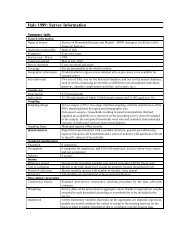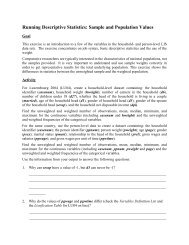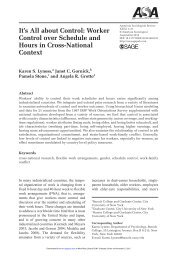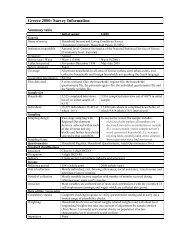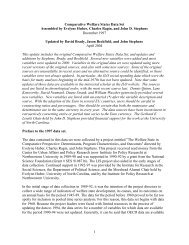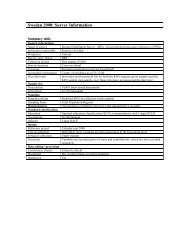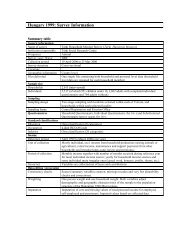Nicola Dickmann: - LIS
Nicola Dickmann: - LIS
Nicola Dickmann: - LIS
Create successful ePaper yourself
Turn your PDF publications into a flip-book with our unique Google optimized e-Paper software.
childless couples in any income class at that time. The displacement to the left can beseen for the family income curve only taking a closer look at a subtler classification ofincome levels. 5 Figure 1 demonstrates these findings for Germany, the USA, the UK andSweden. 6In German scientific literature, these structural differences of families are consideratedas almost natural until today (see for example Stutzer, 2000, p. 434 ff.; Eggen, 1997, p.68 ff). And it holds true for German data of the 1990s and 2000. However, the othernations in consideration have changed quite a bit over time and besides Germany, onlythe United Kingdom still shows the same features as in the 1980s. Contrary to thisstagnation, in the USA and Canada there is no longer any detectable differencebetween the two groups. Thus, the differentiation of families has given way to a singleincome curve of families and childless couples at a time. Figure 2 shows these findingsfor the US and Finland in contrast to the stagnant situation in the UK and Germany in2000.Figure 2 hereFinland surprises with an inversion of the original situation: families in 2000 arestructurally better off than couples without children, who are more often found to belocated in some of the lower income classes and do no longer dominate the high incomelevels. For example, 17 percent of Finnish couples without children had an annualincome between 10.000 to 20.000 international dollars while only 5 percent of thefamilies were in this income class. On the other hand, 18 percent of Finnish familiesearned between 40.000 and 50.000 international dollars per year while only 13 percentof childless couples did. Sweden showed the same favourable distribution for families in1990 but has returned to an equal distribution in 2000.5 All test have been made with a subtler classification to avoid distortion. For graphic reasons, however,the number of income classes in the figures has been reduced to eight.6 Finland shows the same features as Sweden from 1987 onwards, however, earlier data is not avaiable.7



